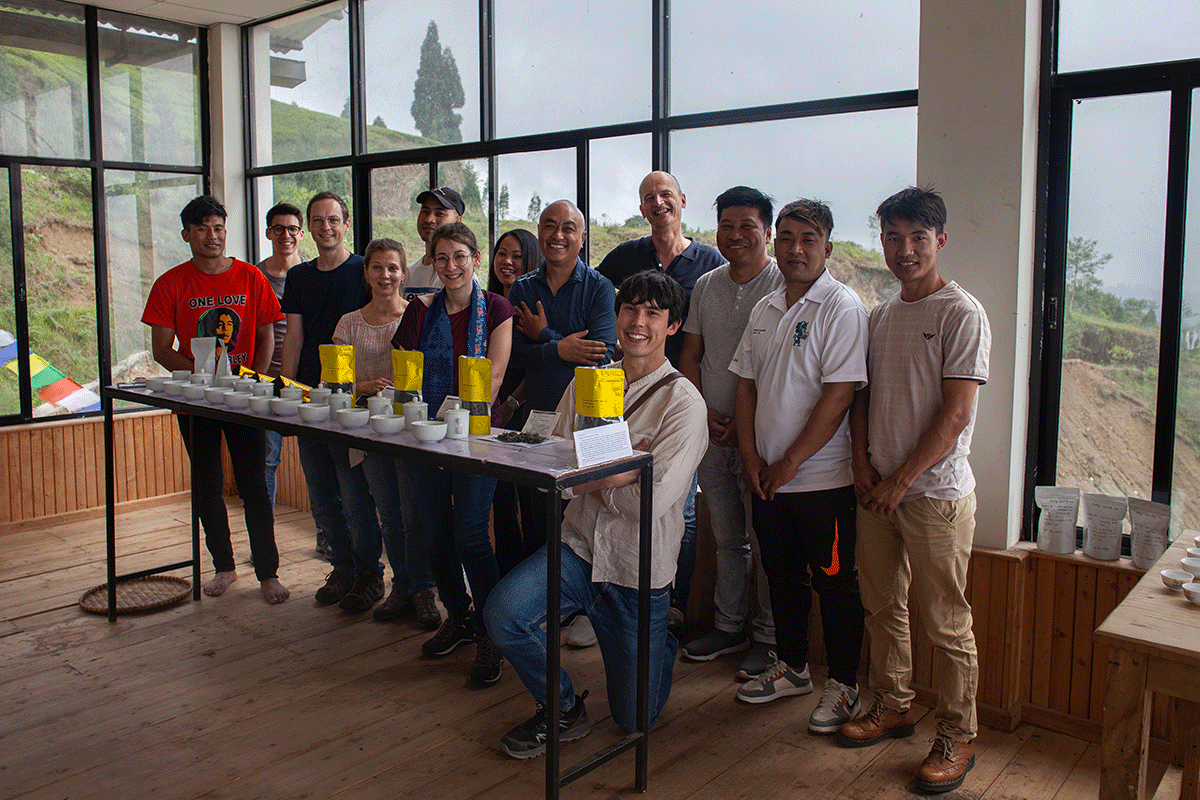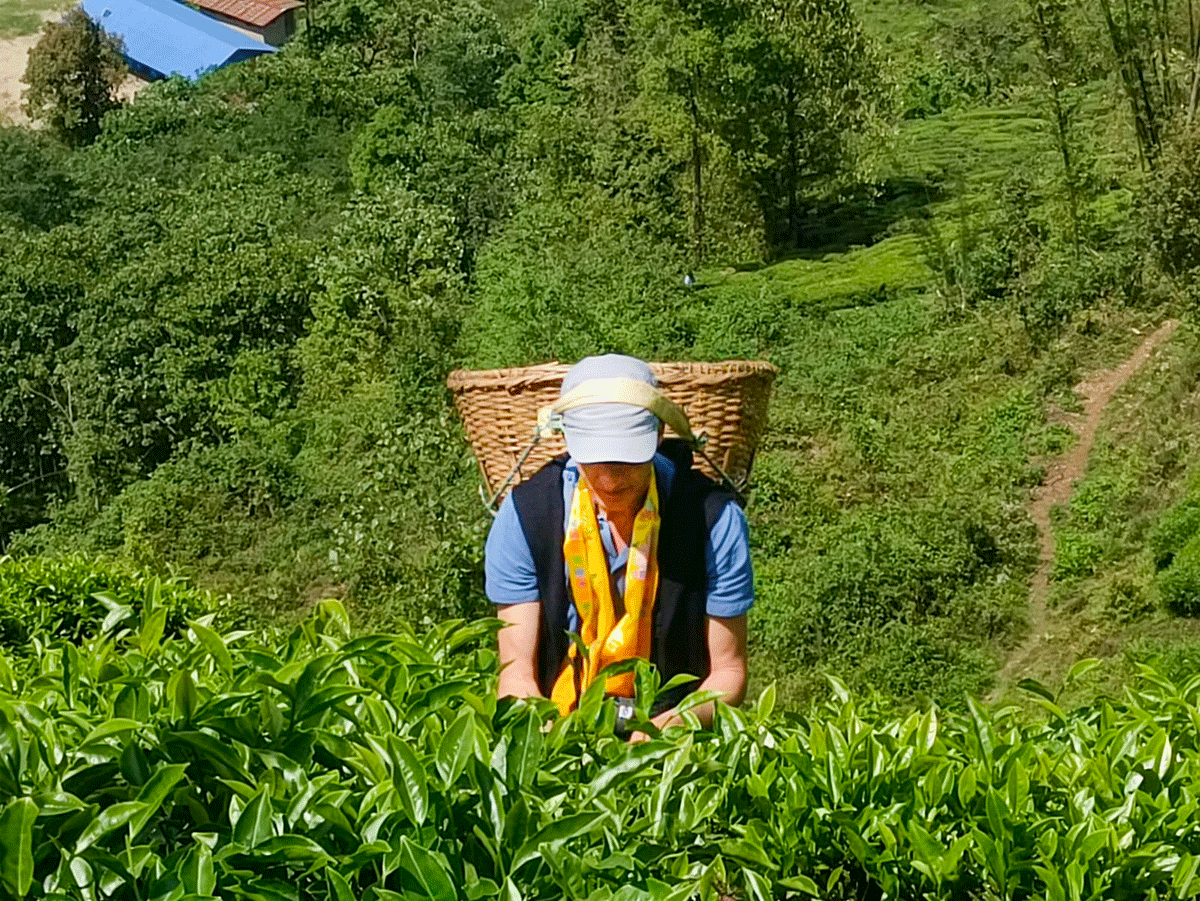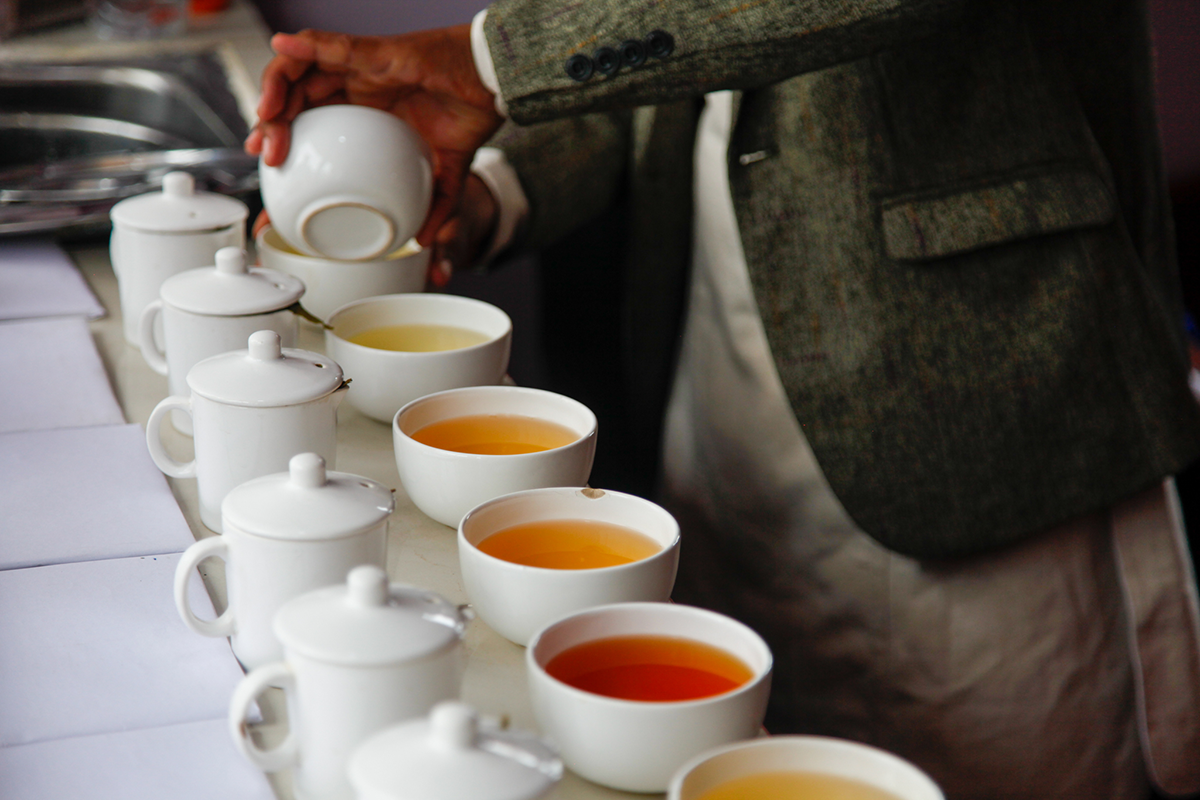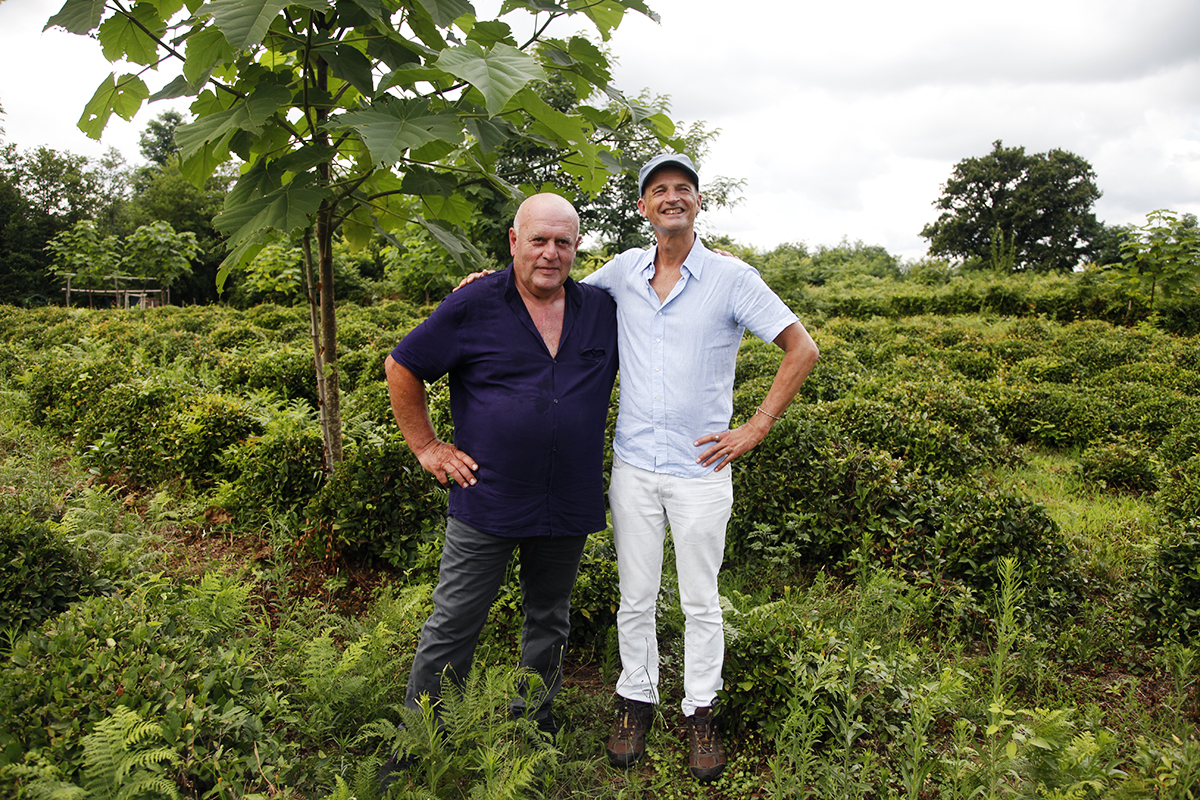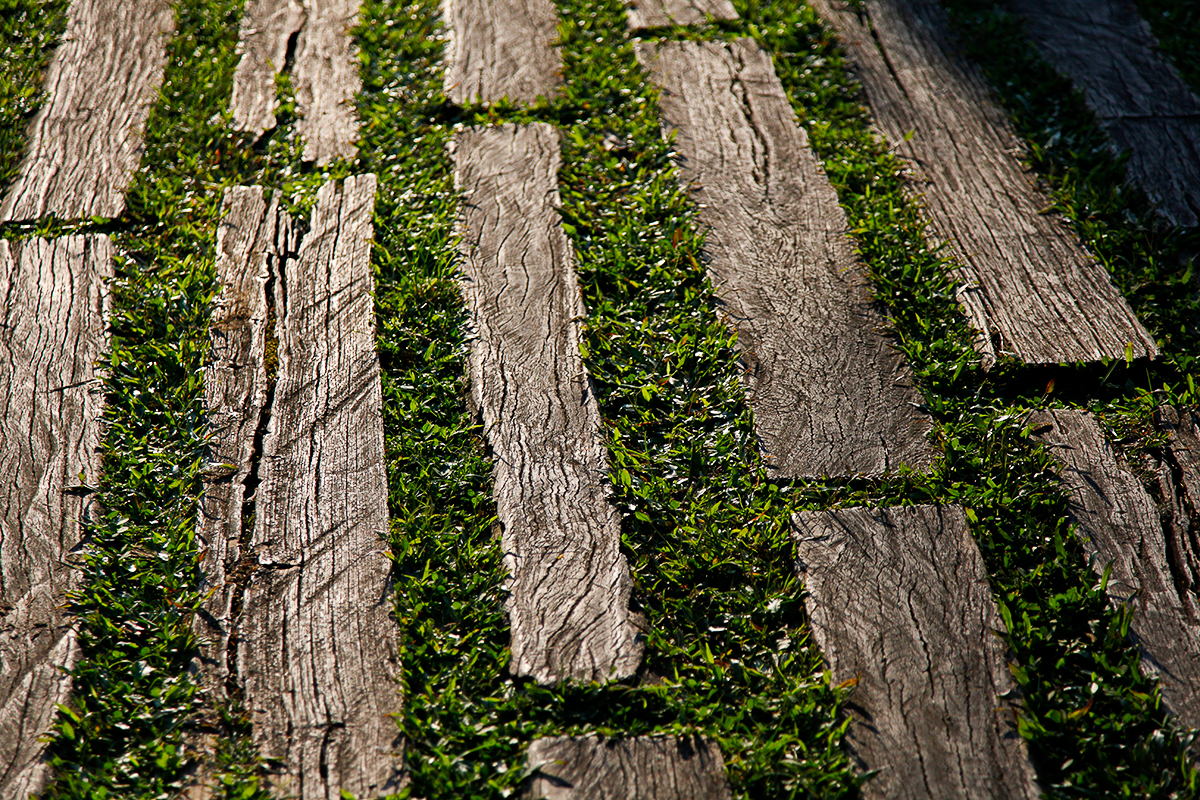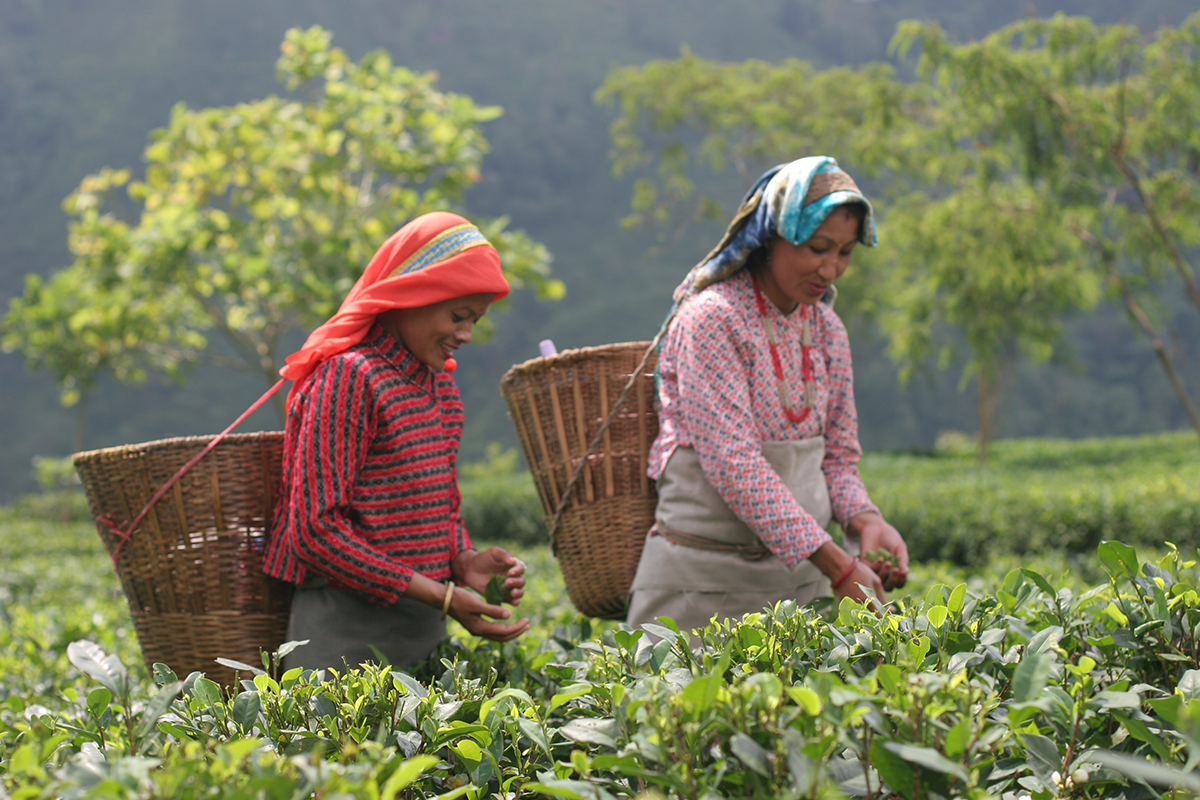Tea has been grown on the island of São Miguel in the Azores for over a hundred years. It has a hot and humid climate, acidic volcanic soil, and a mountainous terrain. That’s all it takes for the tea plant to feel at home here.
From plant to cup
Different practices
You might think that the rules that define the colour of a tea are strict, but this isn’t always the case. Here in the Golden Triangle, the fashion is for Mao Cha, the tea that serves as a base for the various fermented teas known in this part of the world as Pu Erh. Some people let the Mao Cha wither overnight before fixing it with heat, rolling it, then leaving it in the sun for a day. Others, as soon as the leaves are picked, fire them in a wok for about ten minutes before rolling them by hand and leaving them to dry for five to six hours in the sun.
Being Useful
When I buy certain teas I have a strong sense that we’re helping a community. I feel that the money paid for the remarkable work that goes into making a great tea will be shared fairly and won’t just benefit one individual. When I visit a plantation I often ask myself: if I pay twice as much for the tea here, who’ll get the money? In some cases I have an intuition that the money would only go to one person or a particular group of people and that the pickers themselves wouldn’t get any extra. In other places I feel certain that our gesture will be shared. That the whole village will be able to congratulate itself for having made such delicious teas and that every effort will be made to make more. And in these situations I have a strong sense of how we’re helping. Here in Nepal, the team from Palais des Thés is meeting the team at the Norling factory. You’re supporting the whole village when you buy their superb tea. (photo : Anna Galitzine)
Dara’s maocha
Travelling is about meeting people. Last week, I was very happy to meet Dara in the mountains of northern Thailand. Dara’s father, whose family comes from Yunnan (China), fled Kunming at the age of 15 accompanied by his younger brother, and came to the city of Pai. That was in 1938. He was escaping misery. He knew about tea. He felt the right feng shui in Fang and settled there. Dara is passionate about tea and makes a delicious maocha from leaves picked from old tea plants. Here, she’s posing with Mie, her friend with whom she shares her life.
Among the Karen people
It is not only in China and northern Vietnam that tea leaves are harvested from camellias that have grown tall. In the north of Thailand, a few kilometres from Myanmar, this woman, who belongs to the Karen ethnic group, picks young shoots from old tea bushes that are flourishing in the jungle. These will be used to make maocha, which is then turned into dark tea.
The art of picking tea
When it comes to picking tea, you have to do it to understand it. It’s difficult to imagine what it feels like to stand for a whole day, sometimes on a steep slope, with a ten- or twenty-kilogram basket on your back. This basket is held in place by a strap across the forehead while the picker quickly plucks the bud and the two young leaves from every stem on the bush with their nimble fingers. The gesture has to be repeated thousands of times and the young shoots must be thrown over the shoulder with a certain dexterity to make sure they land in the basket. Here, yours truly is concentrating on the task. (Photo: Uday Yangya)
The Darjeeling marathon
Every year, we tea sommeliers are subjected to a marathon: the Darjeeling spring harvests. Samples of new-season teas from the region arrive in bags of ten, twenty or thirty. You must taste them within half a day if you want to be in with a chance of getting hold of the tea. The sooner you buy, the more expensive it is, but the longer you wait, the more you run the risk of missing out on the teas you want. This process, which only takes place for Darjeeling because sales go to the highest bidder and batches don’t exceed a few dozen kilos, lasts about six weeks. By the end, the entire spring production has been sold and the tea bushes, distressed by three consecutive harvests, take a rest before resuming their growth. An observation at this point: every year, these teas are worth more and more. Yet all the gardens in Darjeeling claim to be losing money due to rising production costs, and the increases don’t appear to benefit the pickers. The Mckinsey audits, which were so maligned on the eve of the election, would be invaluable in shedding light on this mystery.
Our Georgian friends
In these difficult times for Georgia, we’ve received this particularly moving message from one of our producer friends: “Every kilo of Georgian tea sold, especially in Europe, contributes to both our dignity and our survival.” Of course, we’re doing what we can for those with whom we work closely, and it’s in this spirit that I’m sharing his message with you. If you’ve never tasted tea from Georgia before, there are some delicious ones. White tea from Guria, for example. The harvest was very small. It’s a white tea produced in the same way as the well-known Bai Mu Dan from China.
Beautiful harmony
Here in Taiwan, the ground outside the oldest black tea factory – now a museum – reminds me of my work. If left unpicked, the tender camellia shoots will gradually turn into stems, into wood. Thus the tea plant is made up of greens and darks, of soft and hard materials, of leaves and branches. This contrast of colours also reminds me of tea’s aromas, which are so often vegetal with green teas and woody with black teas. Everything here speaks of tea, right down to the beautiful harmony of the old boards between which a joyful shoot emerges.
Taking time out for spring
In a turbulent world, it’s good to take time out for tea. As spring approaches, bringing with it the first flowers and fresh green shoots, let’s taste those that have just arrived from the Himalayas. The earliest Camelia sinensis plants are growing again on the foothills of this famous mountain range and the tea season is just beginning in Darjeeling. After a harsh winter and a long dormancy, the tea bushes are awakening. The youngest leaves picked from the end of each stem develop floral, almond and herbaceous aromas in the cup.
I’ve just bought a batch of Rohini Early Spring Ex 4 and of Millikthong Early Spring Ex 2. Once they arrive in France and are sent to the lab for analysis, according to our Safetea™* process, they will be available. These teas will offer a moment’s pause, the scent of spring, and a brief respite from the tumult of the world.
*Palais des Thés is committed to offering its customers only certified organically grown teas or teas that have been analysed in an independent laboratory to ensure they comply with European legislation.

